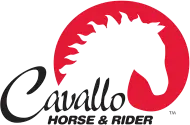The Barefoot Horse

Many of us are happy to allow our horses to ‘go barefoot’. We see the benefits of a more natural program. We don’t like pounding nails into the hoof every 6 weeks. We understand that metal may not be the best composite to secure live tissue. Shoeing is expensive and good farriers require excessive love and adoration, but what choice do we have? If we consider pulling the shoes, our horses may well be lame. Then when we put the shoes back on, he trots off happily. What is the difference? How can some horses go successfully barefoot and others have no end of trouble?
Metal Shoes
There are many factors that contribute to the long-term success of a barefoot program. When a farrier comes to shoe your horse, he trims him flat and level, even and balanced. He removes the sloughing off dead tissue and makes the hoof look neat and tidy. He is aware of the shape of the frog, bars and sole but needs only to clean this up and get a clear picture. His job is to make sure the shoe goes on securely and will shape it to the trim he’s done. The nails should not go through sensitive tissue and it all needs to look good, consistent and uniform. The only thing making contact with the ground is the metal shoe.
Significant Structures
Let’s talk about what happens when we don’t put the shoes on. What happens when the trio of significant structures, namely the frog, bars and are not lifted by the metal shoe? What happens when the bars end up level with the wall? What happens when the frog makes contact before the walls? How does it feel when the sole makes contact with the ground at the same time as the outer walls? The sole’s function should be secondary, not primary, passive not active. So let’s answer this simple question – it hurts!
Hoof Function
A miraculous structure, hoofs support the weight of 1000 lbs. in motion. The walls expand and widen apart to draw the sole flat. With the sole’s leveling downward towards the ground the bone column is invited to descend. Thank you, now we don’t have to bruise the solar corium. Now we can absorb shock and concussion the way we’re meant to do.
Extra Attention
If the bars make contact at the same time as the wall, our expansion function is immobilized. The bar contact, does not allow the sole to draw out. Its position just keeps the hoof static and the pressure of making this primary contact actually exerts upward on the internal structures. Our goal is to allow the hoof to do the job. That means it must function with mobility, elasticity and as a unit. One function cannot suppress another. Simply remind your farrier to pair out the bars so that they can function together with the sole. Ask for attention so that the sole does not make contact at the same time as the walls. Simple. Yes. Under stood? Probably. Practiced? Rarely -because there is no need with a traditional metal shoe job.
Frogs and Other Big Deals
The third party in our trio of significant structures is the frog. Although it can be quite malleable, often compared to the consistency of an over aged dairy product, it is tough and conducts a systemic symphony with the horse’s most important organ – the heart! It’s all about blood, nutrients and circulation. That’s the key. We really don’t want to compromise this gelatinous big cheese. The frog should at least not make contact with the ground before the walls do and at best, be recessed to make secondary contact as the sole draws flat.
The most important factors in a successful barefoot program are:
- Proper hoof function and hoof mechanism
- Movement & Exercise
- Hydration
- Hard Ground
- Frequent trims tailored to the barefoot horse!
- Friends & Socialization
